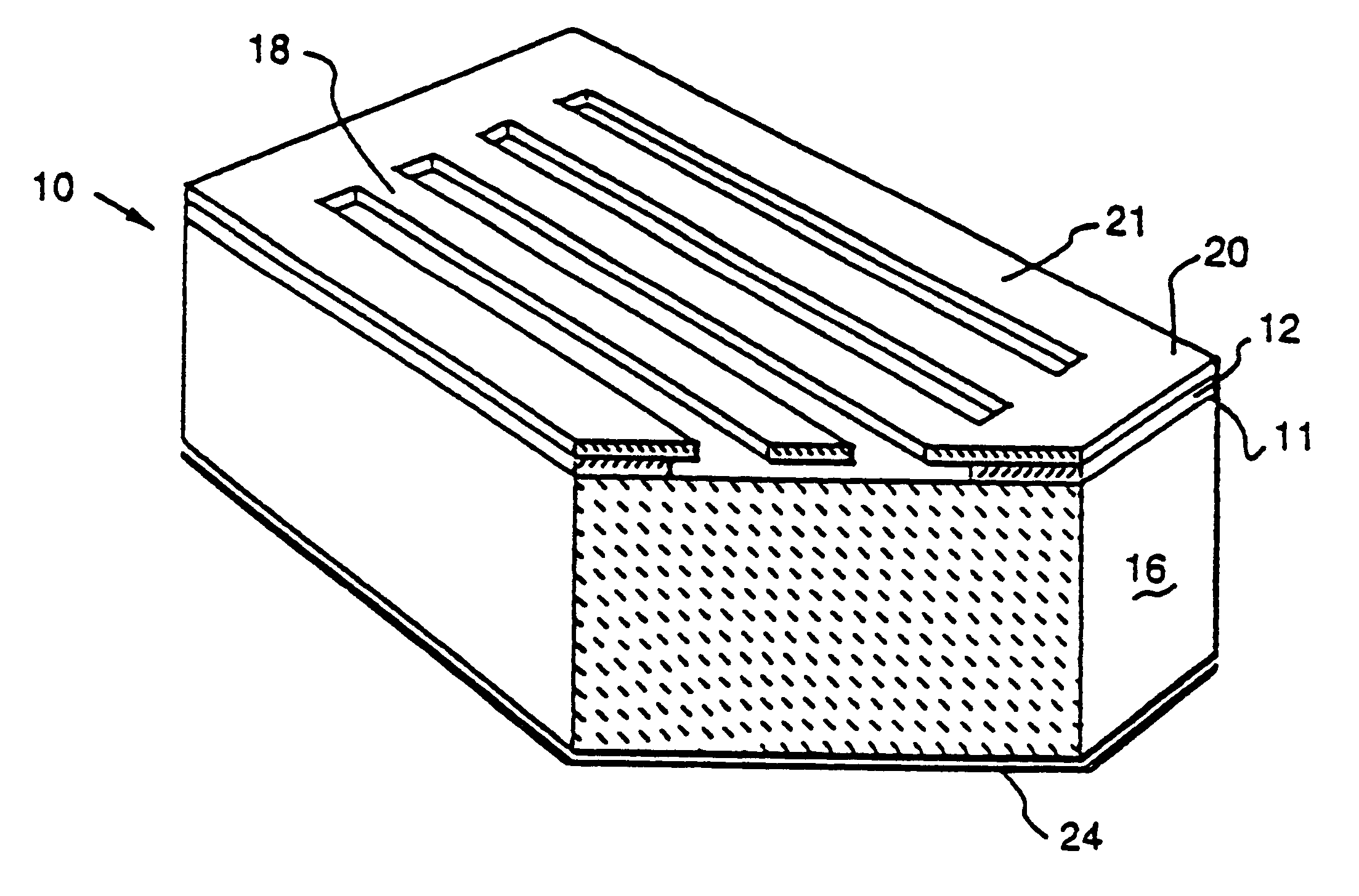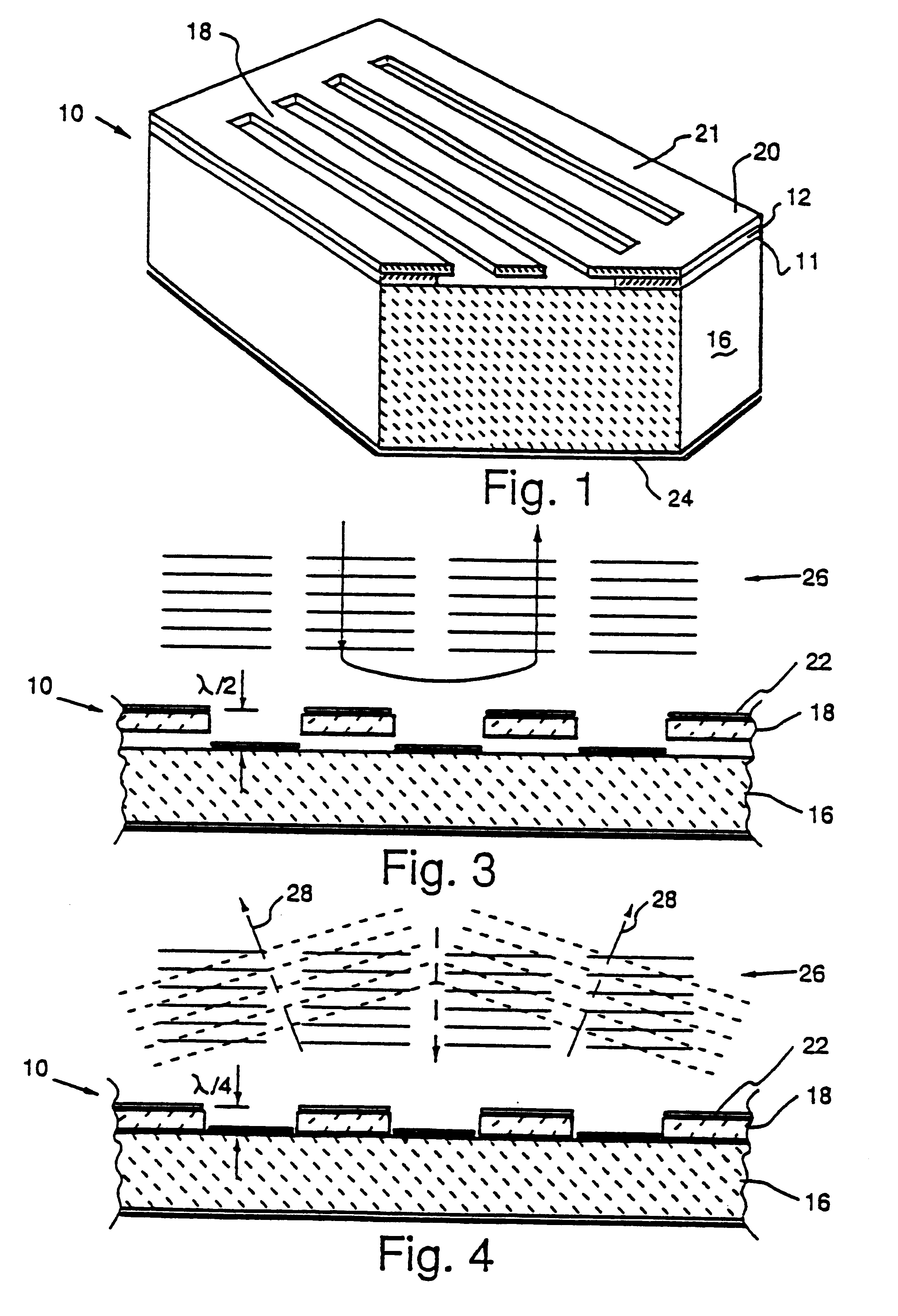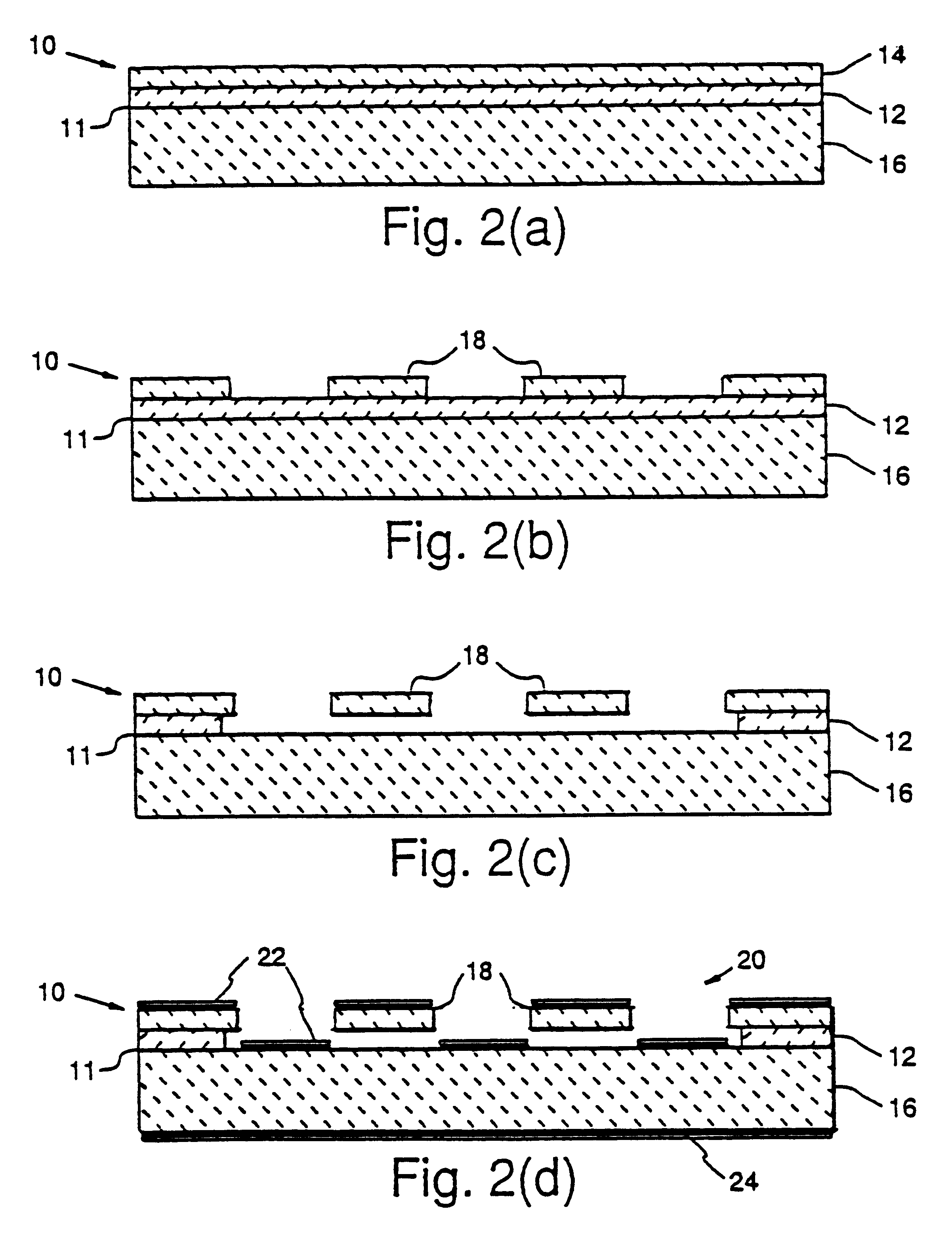Method and apparatus for using an array of grating light valves to produce multicolor optical images
a technology of optical images and arrays, applied in electrical devices, instruments, and piezoelectric/electrostrictive/magnetostrictive devices, etc., can solve the problems of limited liquid crystal lifetime and operating temperature range, limited bandwidth to tens of kilohertz, and inability to meet all the above requirements. achieve the effect of increasing operational speed, and reducing the size of the slm
- Summary
- Abstract
- Description
- Claims
- Application Information
AI Technical Summary
Benefits of technology
Problems solved by technology
Method used
Image
Examples
first embodiment
The grating light valve (GLV) or modulator is generally indicated at 10 in FIG. 1. The modulator 10 includes a number of elongated beam-like elements 18 which define a grating that, as will be later explained, can be used to spatially modulate an incident light beam. The elements 18 are formed integrally with an encompassing frame 21 which provides a relatively rigid supporting structure and maintains the tensile stress within the elongated elements 18. This structure defines a grating 20 which is supported by a partially etched silicon dioxide film 12 at a predetermined distance of 213 nm above the surface of a silicon substrate 16.
Before commencing the description of how the modulator 10 is fabricated, it should be noted that, in this case, each of the elements 18 are 213 nm thick and are suspended a distance of 213 nm clear of the substrate 16. This means that the distance from the top of each element to the top of the substrate is 426 nm. This distance is known as the grating am...
PUM
 Login to View More
Login to View More Abstract
Description
Claims
Application Information
 Login to View More
Login to View More - R&D
- Intellectual Property
- Life Sciences
- Materials
- Tech Scout
- Unparalleled Data Quality
- Higher Quality Content
- 60% Fewer Hallucinations
Browse by: Latest US Patents, China's latest patents, Technical Efficacy Thesaurus, Application Domain, Technology Topic, Popular Technical Reports.
© 2025 PatSnap. All rights reserved.Legal|Privacy policy|Modern Slavery Act Transparency Statement|Sitemap|About US| Contact US: help@patsnap.com



